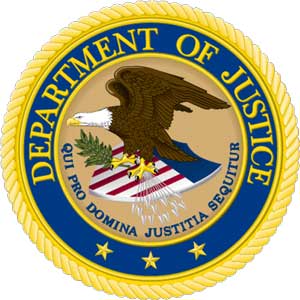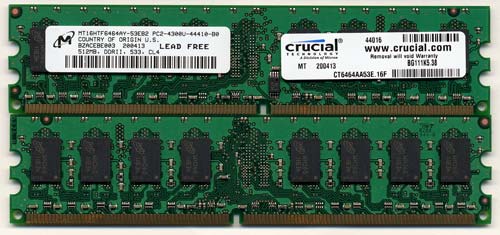In Memory Of The Law: The Memory Industry's Legal Problems
by Ryan Smith on October 25, 2007 3:00 AM EST- Posted in
- Memory
DRAM Price Fixing
In 2002, the major American computer OEMs banded together to complain to the United States Justice Department about potential anti-competitive actions in the memory market. From 1999 up to that point, the OEMs had been paying fairly high prices for their RAM for a sustained period of time, which was unusual given the volatile nature of the market. Given in particular the economic slowdowns in that period of time, the demand for RAM surely should have been well below the supply, and prices should have been hitting rock-bottom as a result. While the market was fluctuating somewhat, prices had not come down like they should have.

Starting with the complaints from the OEMs, it only took the Justice Department a year to start finding memory manufacturers guilty of engaging in price fixing as the OEMs believed. All told, the list of companies found guilty was practically a who's who list in the memory world, where no less than nine companies eventually pled guilty and/or settled. The companies were:
- Infineon
- Samsung
- Hynix
- Elpida
- NEC
- Winbond
- Micron
- Mosel.
- Nanya
In the 3-year period of anti-competitive behavior, the memory cartel is estimated to have overcharged American OEMs by at least a billion dollars, which in turn was eventually passed on to consumers. The direct consumer cost - that is consumers who were directly overcharged as opposed to being overcharged through their OEMs - is unknown, but given the shape of the market this would only be a fraction of the cost through the OEMs.
As for why this happened, there are two reasons given. The first is fairly typical: a desire to make more money. By fixing prices the cartel pulled in an additional billion dollars in the American market alone and avoided some of the drag from the economic slowdown of the period. A second reason that has been proposed has been that the price-fixing was done to force Rambus' RDRAM out of the market at a time when they were beginning their patent suits. RDRAM was subject to price fixing like all other forms of DRAM, and ended up always being priced comparatively higher than other forms of DRAM. This theory has never been confirmed (simply put, the Justice Department's job doesn't include finding out why the cartel did what it did), but it has always seemed extremely likely given the timing and the fact that RDRAM did indeed die in part due to high prices.
The real meat of the issue is not the cartel engaging in price-fixing; it's the punishments for doing so. The total of all the fines and settlements is well over a billion dollars, and with the addition of other associated costs the penalties are believed to be well in excess of the ill-gotten profits from the whole operation. Samsung, believed to be the ringleader of the cartel, holds in particular the dubious distinction of having paid the second largest antitrust fine ever to the Justice Department, at $300 million (and this doesn't include any further settlement costs). Hynix took the number three spot at $185 million, and Infineon became number four at $160 million.
Along with monetary fines, executives from several of the guilty cartel members were also directly found guilty and forced to pay their own fines and serve jail time. Individual fines ranged between $100,000 and $250,000, with jail sentences between 4 and 8 months.
Finally, on top of any official fines for their actions, there are the class action suits brought against the cartel to recover some of the money that the cartel overcharged. The members of the cartel have settled the class action suits to a total of $326 million, to settle any wrongdoing they've done towards anyone who purchased memory directly from the cartel. Now since this is only for direct purchases, the majority of the parties are the OEMs and mid-level companies that assemble and sell DIMMs; however, an interesting side-effect of this settlement is that end-users are also part of the eligible party when they purchased memory directly. Micron directly owns and operates the Crucial brand, so end-users who purchased memory from them in the time period are in a unique position of being one of the few (if not only) groups of users that will see a dime out of this settlement.

All told, the numbers from the operations of the memory cartel are staggering. Nine core companies with a number of subsidiaries of their own managed to organize themselves long enough to overcharge buyers by a billion dollars over a three year period. This is obviously illegal but at the same time it's an admittedly impressive act of collusion. In return they have been fined and sued for well over a billion dollars, easily erasing any gains and filling the better part of the United States Justice Department's top 10 fines list.
And yet the end isn't quite here. They say the wheels of justice turn slowly; one only needs to look at the time frame of this case to see why. What started as collusion in 1999 became an investigation in 2002, and claims for the class action suit will continue to roll in until the very end of 2007. By the time the claims are paid and the book is finally closed on this case, it will be 2008, some nine years after the initial crime started and six years after the investigation started. Retribution has been a long time coming. Sadly, while OEMs were indeed overcharged during this period, the reality is that it's the end customers that were really forced to foot the bill. Score points for the OEMs, the DOJ, and the lawyers; just pay no heed to the average Joe or the businesses that were overcharged for PCs or RAM during this period.










27 Comments
View All Comments
Ryan Smith - Thursday, October 25, 2007 - link
It's the belief of the OEMs that this overcharging came solely out of their profits. I agree it's not completely logical, since I too would assume they'd just end up driving down the cost of computers, but throughout the case this is what the OEMs have been claiming and why they're getting the lion's share of the settlement (and it isn't something I can immediately disprove).Sunrise089 - Thursday, October 25, 2007 - link
Ok, well put, but in that case the consumers still didn't loose (except those that bought memory directly). If the OEM's ate the additional cost by lowering profits to maintain sales, then it's fine for them to make up for it now. The article however makes the claim the OEMs passed the cost onto the consumers (implying their profits stayed essentially the same) and are now taking in a windfall.PandaBear - Thursday, October 25, 2007 - link
This is what I hate about these "price fixing" lawsuit. The OEM charge more when the price goes up, and then sue the DRAM manufactures and keep all the money. The DRAM manufactures raise the price (or cut back on R&D or capacity improvement due to higher risk/lower profit) to pay it.With all these different DRAM manufactures around the world (Korea, Japan, US, Taiwan, and all the low end stuff in China now), and the market being commodity with spot and contract market trading, I would imagine it is almost impossible to price fix if the profit is there, because someone will break the deal and grab the profit in that case.
When the lost is high (like right now), you can really sue them to cut back production to reduce loss or cut back in investment right? So how do you call that price fixing?
DOJ should be suing the OPEC for price fixing oil instead, and ban all oil import until they break that price fixing scheme.
Zoomer - Saturday, October 27, 2007 - link
Actually, with a majority of the market with Taiwanese, Korean, and mainland chinese, I wouldn't rule out price fixing in the future. They just have to figure out how to better hide it.Perhaps they knew they would get caught, but decided to do it anyway to drive RAMBUS out of the market, once and for all. < / conspiracy theory>
ZetaEpyon - Thursday, October 25, 2007 - link
That's not in reference to lower prices that might result, it's in reference to a direct cash payout as a result of the class-action lawsuits. I've already received a couple notices in the mail about the lawsuits, as I purchased memory directly from Micron a couple of times during those years.Olaf van der Spek - Thursday, October 25, 2007 - link
Why would price-fixing force RDRAM out?
Wouldn't it affect all memory types equally?
leexgx - Thursday, October 25, 2007 - link
R-DRAM was all ways overprced more the DDR ram and you needed to put them in pairs as well where as DDR only needed 1 slotonly ever seen Dell pcs use (about 10 heh) it and some servers
magreen - Thursday, October 25, 2007 - link
Interesting article but grammar and spelling were not up to par.Owls - Thursday, October 25, 2007 - link
This felt like I was reading a high school report.Kishkumen - Thursday, October 25, 2007 - link
I'd have to agree. I'm tired of stumbling over the errors so I'm giving up after only reading the first couple of paragraphs. It appears to be an interesting article that could be easily corrected by some basic proof reading.